
Passengers of ethnic Yi group unload luggage from the train on Jan. 16, 2016. (Xinhua/Jiang Jinghong)
CHENGDU, Jan. 18 (Xinhua) --In a high-speed rail era, few would miss the old-fashioned "green-skinned trains" -- so named for the color of train cars' external paint -- as they are associated with a slow and rickety ride, smelly carriages, and people cramming against each other. But for some living in the deep mountains in southwest China, the green train is their only access to the outside world.
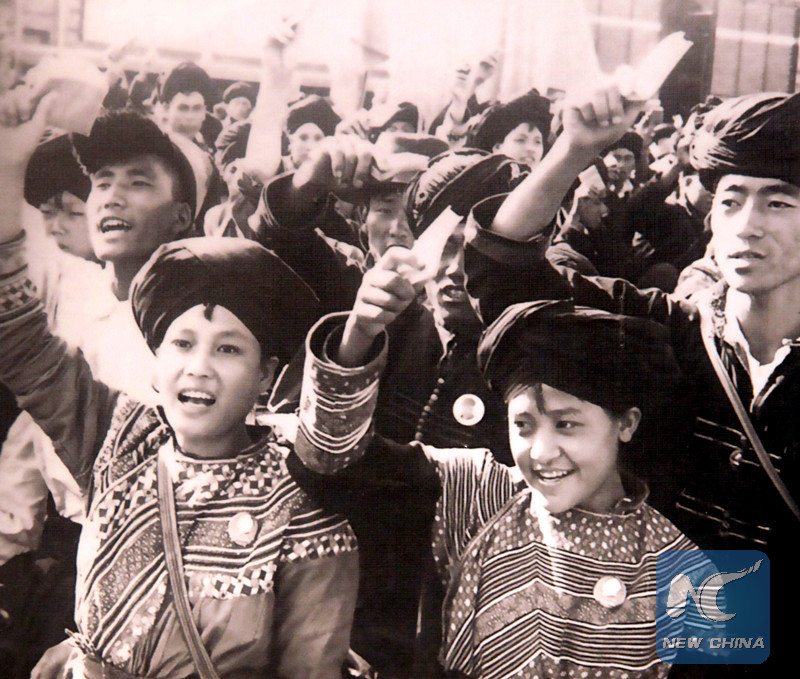
People of ethnic Yi group celebrate the opening of the railway in the 1970s. (Provided to Xinhua)
Liangshan Yi Autonomous Prefecture in southwest China's Sichuan Province is one of the poorest areas in the country, largely because the steep and dangerous mountains have cut off local people from the outside. Railway engineers were once baffled by the complex mountainous terrain there, but against all odds, a railway was built in the 1970s.

Workers clean up the train carriages in the 1970s. (Provided to Xinhua)
For almost half a century, the slow-moving green trains have been running on this section of the railway, with an altitude of about 2,000 meters above sea level, picking up farmers and their farm produce at every local station.

Jike Waze carries luggage to the train on Jan. 16, 2016. (Xinhua/Jiang Jinghong)
Fifty-two-year-old Jike Waze and his family live in a village in Xide County, Liangshan, right next to the railway.
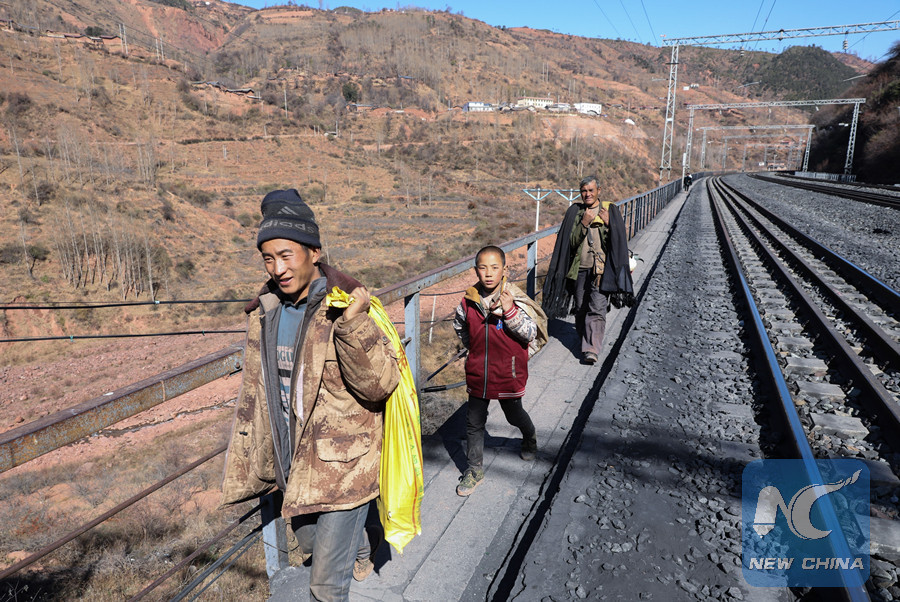
Passengers of ethnic Yi group walk to the train station on Jan. 16, 2016. (Xinhua/Jiang Jinghong)
A father of four, he grows corn for a living, earning about 30,000 yuan (about 4,360 U.S. dollars) a year to feed the entire family.
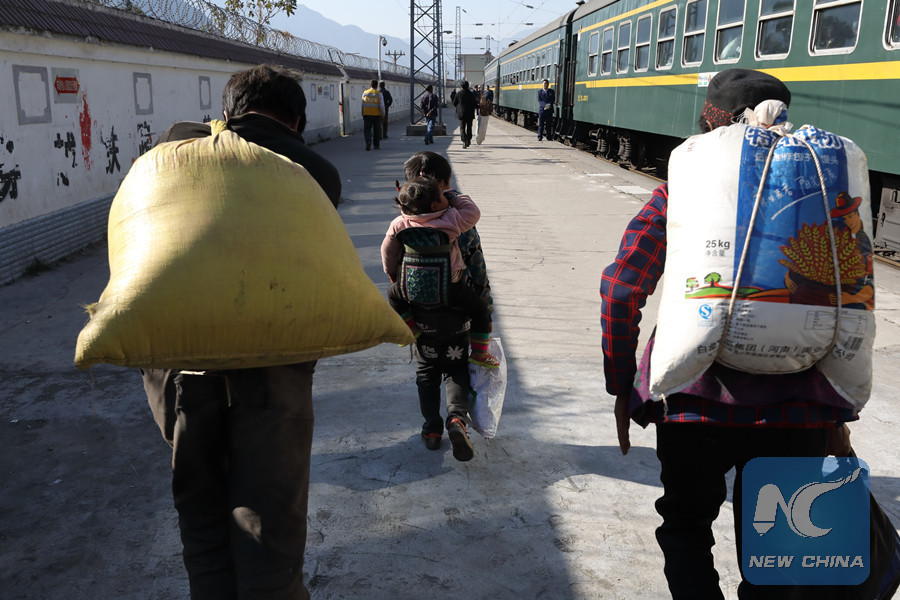
Passengers of ethnic Yi group leave the train station on Jan. 16, 2016. (Xinhua/Jiang Jinghong)
This day, Jike Waze put a bag of corn and some poultry on his back. He will catch the train to the town of Xide County to sell his produce.
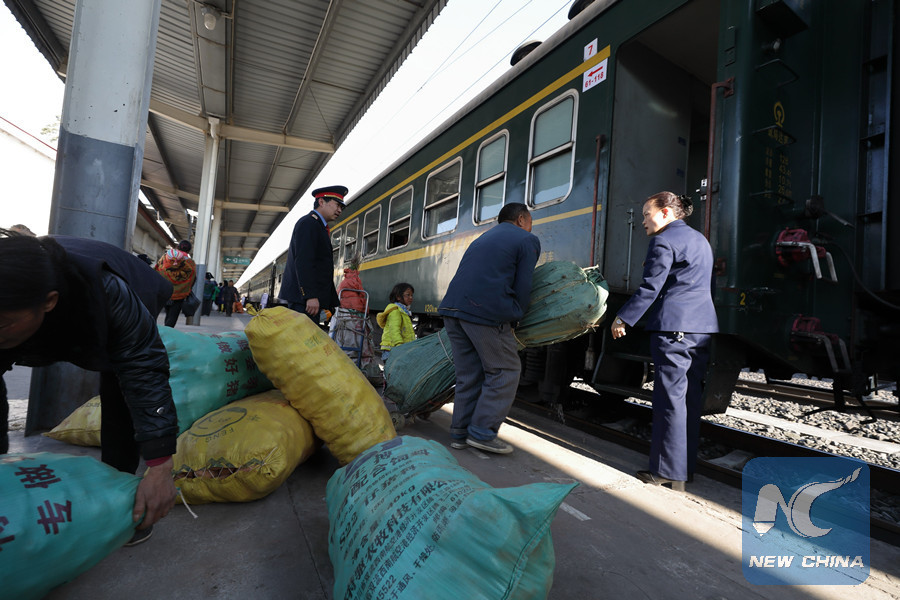
Passengers of ethnic Yi group load luggage onto the train on Jan. 16, 2016. (Xinhua/Jiang Jinghong)
"We got this train service since I was very young. Then I moved my home from the top of the mountain to border the railway." He says.
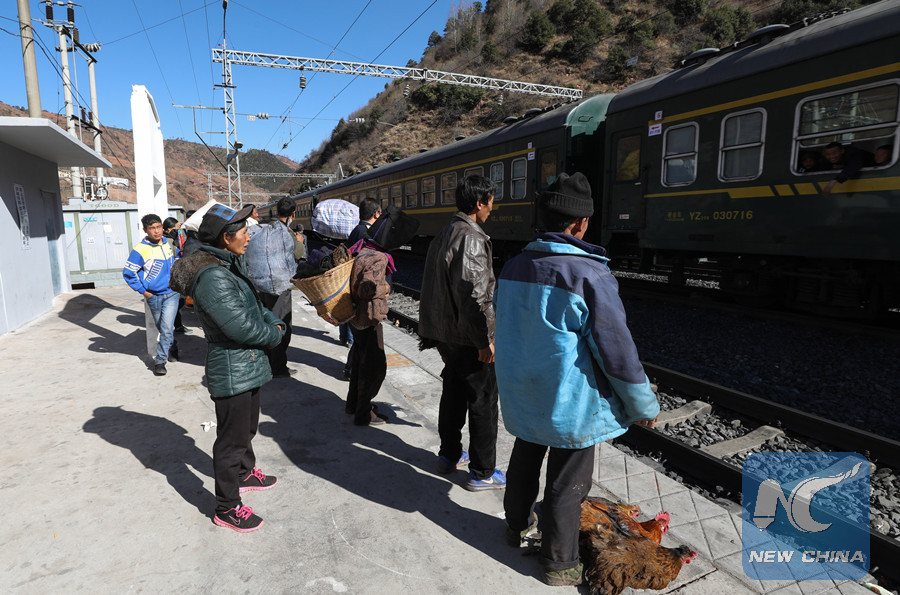
Passengers of ethnic Yi group wait for the train on Jan. 16, 2016. (Xinhua/Jiang Jinghong)
Like Jike Waze, many local ethnic Yi people hurry to the Shamalada Station, carrying bags and bamboo baskets bulging with goods.

Photo taken on Jan. 16, 2016 shows the inside of a train carriage. (Xinhua/Jiang Jinghong)
On the train, one can find chickens and ducks popping out their heads from the bamboo baskets. Passengers, mostly clad in ethnic clothing, chat with each other. Some are holding babies in their hands.

A boy of ethnic Yi group sit on piles of luggage in the train on Jan. 16, 2016. (Xinhua/Jiang Jinghong)
Ethnic Yi people like to sing songs and dance. On the train, the conductor sings ethnic Yi folk songs to welcome friends from afar.
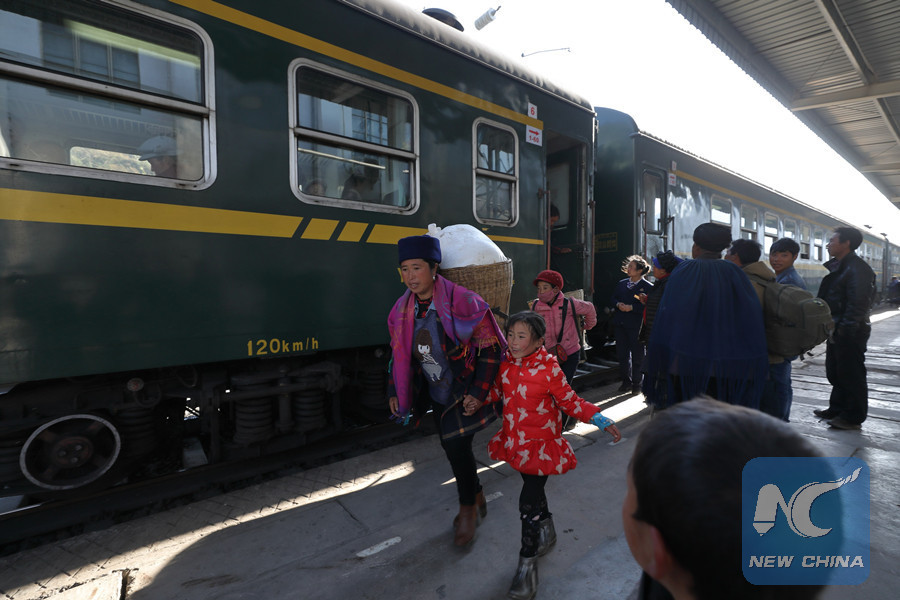
Passengers of ethnic Yi group leave the train station on Jan. 16, 2016. (Xinhua/Jiang Jinghong)
It takes about ten minutes to get to the next local station. The train fares are cheap.
The railway service is the lifeline to locals. The modest-looking small train station and the clunking green train are indispensable to their hinterland life.

